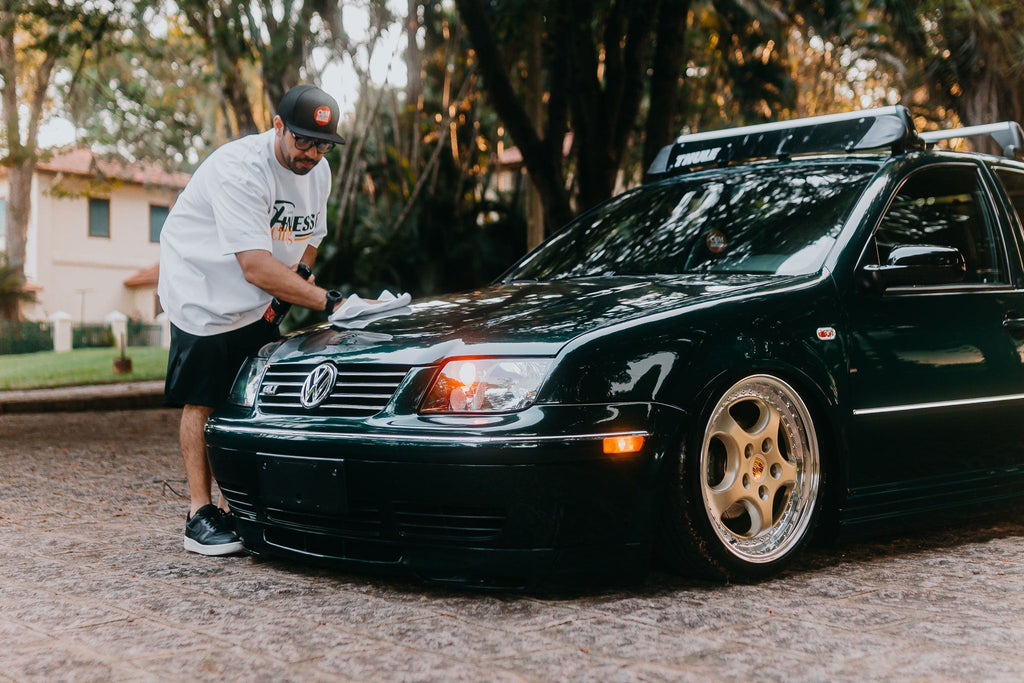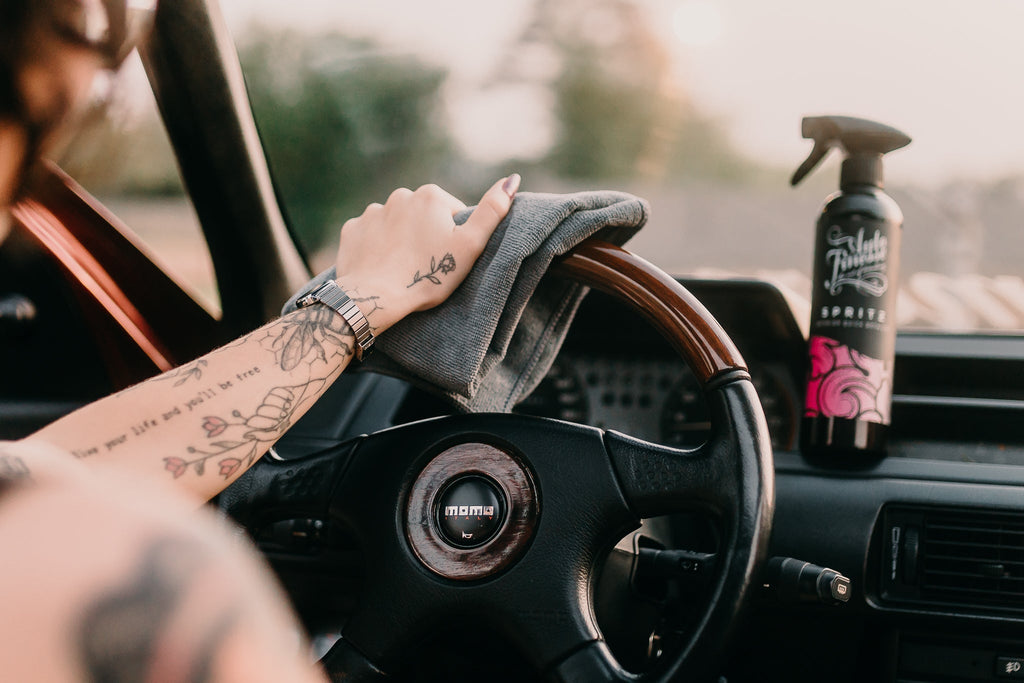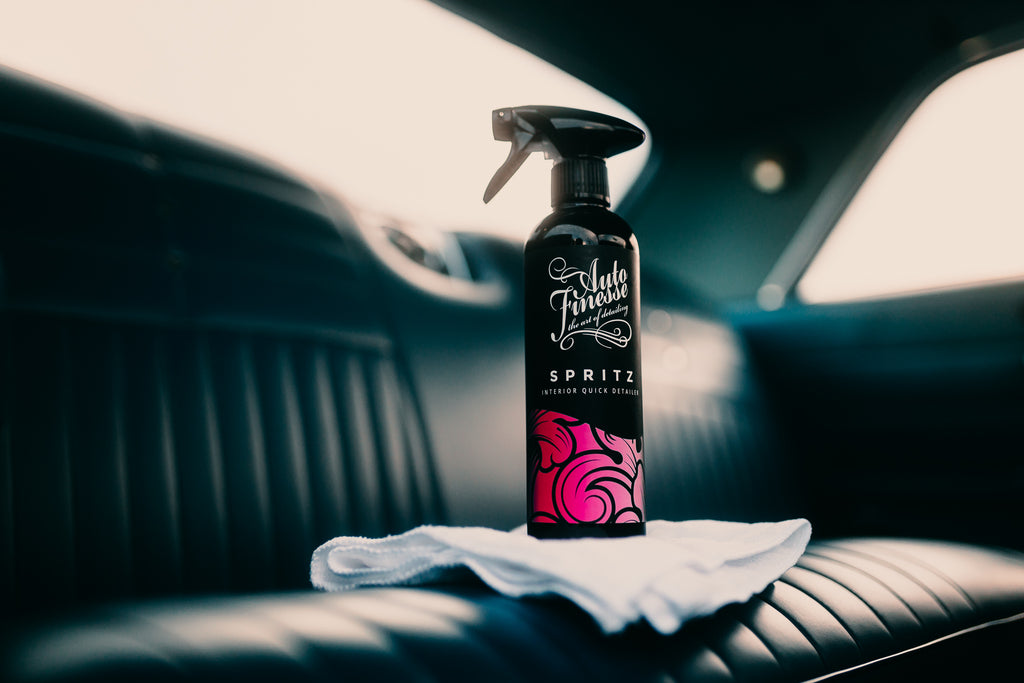Spring Detox
The past few weeks may not have felt like winter's behind us, but it's always good to stay ahead of the game, right? With the weather expected to improve soon, now is the perfect time to strip away your winter detail and refresh your vehicle with our spring detox.
Winter is always a challenging time for vehicles, and this past season was especially tough with the "Beast from the East" making multiple appearances. But don’t worry, we’ve got you covered. We’ve put together a spring detox to rid your car of all the contaminants it picked up during the harsh weather. From relentless rain, snow, and sleet to the heavy use of gritters—while great for road safety, they’re terrible for your paintwork and wheels. Since the 1930s, roads have been salted to prevent ice, but salt traps moisture, accelerating corrosion if not properly washed off. That’s why protection is so crucial. This spring detox will strip away your winter protection, giving you the perfect chance to start fresh with decontamination steps like clay barring, ensuring your vehicle is fully prepped and protected for the months ahead.
Here are our top tips to get your cars and motorbikes prepped and ready for the sunny days ahead:





First things first: ensure your car is thoroughly clean. Start by rinsing off any loose dirt with a jet wash, then apply a quality snow foam like Auto Finesse Avalanche to lift and remove debris. Follow up with a proper contact wash using the two-bucket method. Add a good shampoo—our Lather shampoo offers a range of fragrances to suit any mood—into one bucket, then foam it up with a jet wash. Fill the second bucket with clean water. Dip your wash mitt into the soapy bucket and wash the car from top to bottom, using circular motions. Rinse the mitt in the clean water before dipping it back into the soapy bucket, repeating until all surfaces are cleaned. Rinse thoroughly from the top down, and ensure the car is completely dry before moving on to decontamination.










Washing your vehicle isn’t enough to get it truly clean. Even if it looks spotless, there’s likely still hidden contaminants. The best way to reveal this is by using a clay bar. Before you start, make sure to use products like ObliTARate or Iron Out to remove any remaining tar and contaminants, which will help prolong the life of your clay bar. Always use a lubricant when working with clay—never use it dry, as this could cause damage to your paint. Spray a lubricant, like Auto Finesse Glide, onto the surface (out of direct sunlight), and gently move the clay across the paint in small, circular motions with light to medium pressure. This will lift embedded grime as you go. After completing a panel, wipe it down with a microfibre cloth to remove any residue before moving on to the next section.










If you notice the clay bar collecting a lot of dirt, simply fold it over to reveal a clean surface. Once the clay becomes too dirty or no longer effective, toss it—clay bars can’t be washed or revived. A handy tip: when using a new clay bar, break off smaller pieces rather than using the entire block at once to avoid unnecessary waste.


After buffing off any clay bar or lubricant residue with a microfibre cloth, it's time to polish your paint with Tripple all-in-one polish and then apply wax or sealant. It’s crucial to follow polishing with protection, as you've just invested time in decontaminating your car to prep it for this step. Whether you choose a paint sealant or a carnauba wax is up to you—sealants typically offer more durability, but even our carnauba waxes provide around three months of protection.
Apply wax panel by panel using circular motions. Once you finish one panel, buff off the previous one to ensure an even finish. Avoid working in direct sunlight, as this can cause the wax to cure too quickly. If you run into this issue, use a quick detailer with a microfibre towel to remove any residue. On warmer days, work on one panel at a time and buff immediately after applying. For extra protection, you can apply multiple layers of wax, but make sure to wait at least three hours between each layer to allow proper curing.





Wheels should be cleaned thoroughly during the wash stage. After a harsh winter, your wheels are likely covered in dirt, salt, and brake dust. Brake dust is particularly harmful to wheel surfaces, so it's important to remove it quickly to prevent deterioration. Once clean, treat your wheels to the same care as your paint by applying a wax or sealant. High-temperature-resistant wheel sealants are ideal, as they provide a durable protective layer against road grime and contaminants. These are especially effective on alloy wheels. For added protection, try our hybrid Mint Rims wheel wax, which offers the benefits of both wax and sealant. Simply apply to dry wheels with a microfibre cloth or foam pad, allow a few minutes for curing, and buff off. Always ensure wheels are clean before applying any protective product!





Caring for plastics is relatively simple, requiring only a regular wash and a protective layer. The type of finish you prefer will determine whether you opt for a dressing or a sealant. For a matte finish, natural wax is ideal, while a sealant will give your plastics a longer-lasting shine. To clean, spray Verso onto the surface—especially for dirtier areas like the engine bay—and allow it to work before agitating with a detailing brush. Once cleaned, the protective layer you apply to plastics should hold up well throughout the spring and summer. Regular maintenance with Dressle will keep them looking fresh, but adding extra protection never hurts.










Glass is often overlooked, but it’s just as important to protect and seal as other surfaces. Sealing your glass adds an extra layer of safety, especially with the upcoming April showers. A good sealant helps water bead and run off effortlessly, reducing the need for excessive screen wash use. Plus, it minimizes those unsightly wiper streaks. Despite feeling smooth to the touch, glass is not entirely smooth on a microscopic level. Our Vision polish is perfect for cleaning and smoothing the surface, allowing water to glide off more efficiently.





